It’s not easy being a mother in Somalia
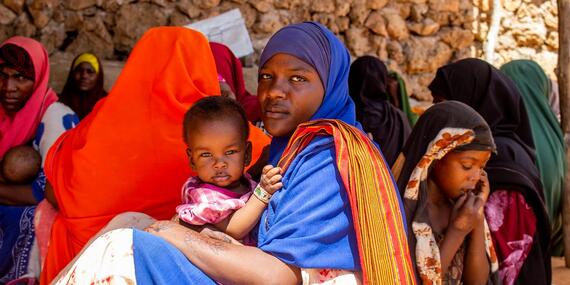
In Somalia’s Jubaland State, a visit to Kismayo General Hospital paints a grim picture. Four-year-old Khaalid Mohammed is battling malnutrition and gastroenteritis, a condition that causes diarrhoea and vomiting. He and his mother, Shamco Sooje, 25, recently arrived at a camp for internally displaced people (IDPs), having left their village due to drought and conflict.
She explained: "We have not received any food assistance since we arrived a few weeks ago. However, we have been registered, and that's why we were referred to the hospital when my son fell sick."
Khaalid is just one of millions of children enduring a consequence of prolonged drought and conflict in Somalia: a surge in preventable diseases. Since January, nearly 2,000 suspected cases of cholera have been reported from 26 districts. Last year, more than 15,000 cases of acute watery diarrhoea/cholera and more than 17,000 cases of measles were reported. But only 27 per cent of Somalia’s population have access to essential health care.

Mothers and children endure hardship in Middle Shabelle Region
Women and children make up more than 80 per cent of the displaced people in Somalia, and they are most affected by the limited access to and unavailability of water, sanitation and hygiene services, and increased risk of waterborne diseases, such as cholera.
In Jowhar District, in Somalia’s Middle Shabelle Region, mothers and children endure extreme hardship due to a combination of devastating factors: a severe water shortage, lack of food, disease outbreaks, increasing malnutrition and poor health services. In the rural areas of Mahaday and Rage Celle, hundreds of women are forced to seek help at the region’s only general hospital and stabilization centre in Jowhar, stretching the facility to its limit.
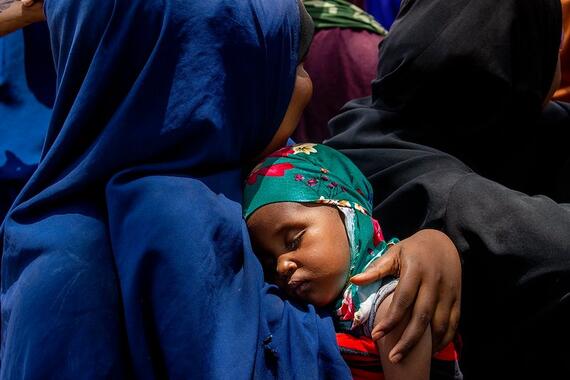
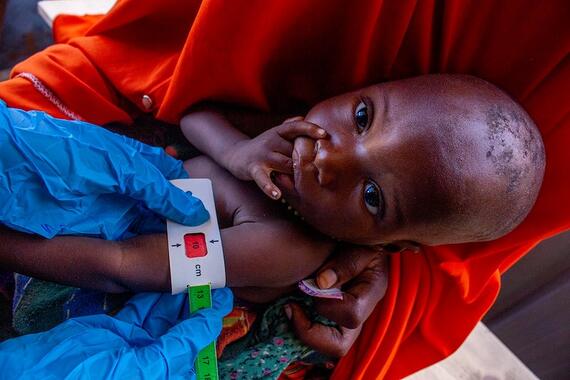
Abdulkadir Hassan Wehliye, a doctor at the centre, said: “Most of the women find it difficult to get here because they do not have the transportation fare. Most of them come from as far as 200 km to get here. Sometimes, we do not have bed space for them because of demands. For instance, now, 30 patients arrived today, and we have just 15 bed spaces available.”
At Saacid Nutrition Centre, in Jowhar Town, an implementing partner manages a Targeted Supplementary Feeding Programme. Women sit huddled together with their young ones, eagerly awaiting much-needed nutrition services as the sun blazes down on their worried and fatigued faces. They travelled from far-off places that had no facilities to address their dire needs. Leaving everything behind, they endured an arduous trek to bring their children to the nutrition centre, settling in an IDP camp nearby.
Some of the mothers were sheltered under the zinc shade that provides respite from the scorching sun. Others sat on the ground, joined by the common bond of motherhood. Some carried their young ones close to their hearts, covered under a veil or wrapped around their bodies.
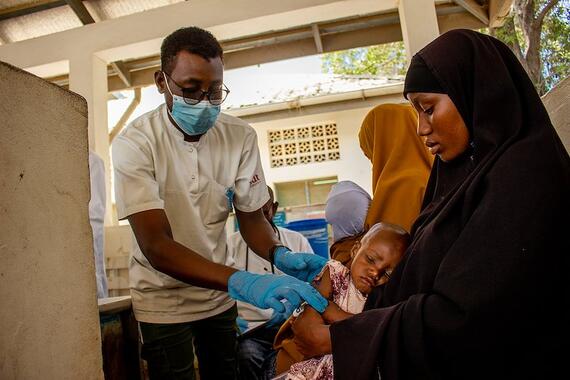
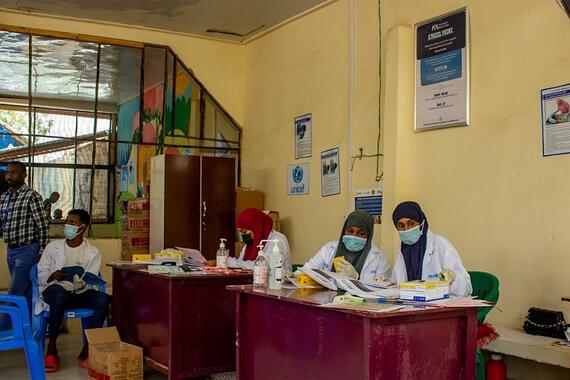
“We just need a little help along the way.”
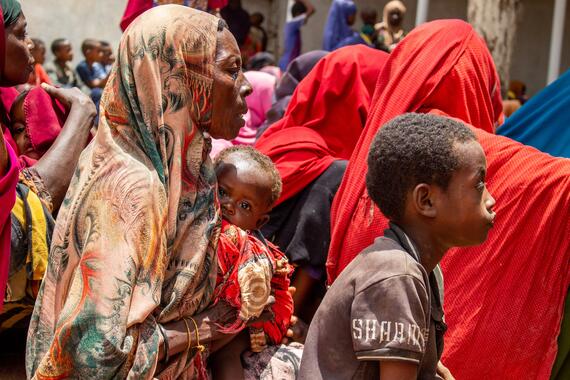
Maryan Abdi Ali, a 65-year-old grandmother, was at the Saacid Nutrition Centre with her 2-year-old grandson, Ali Aden Muse. She said: “Every day is a challenge. We barely have enough food to survive, let alone thrive. And now, with Ali's condition, things are even more difficult."
They have lived in the newly established Alla-Aamin IDP camp since January. Maryan and her family were forced to leave their home in Baraki village, west of Jowhar, due to the severe drought and a failed seasonal harvest.
"We had no choice but to leave,” she said. “We left everything behind and came here with just the clothes on our backs. We are grateful to have a roof over our heads, but it is not enough. I pray that Allah will provide for us and keep us safe. And I have faith that things will get better. We just need a little help along the way."
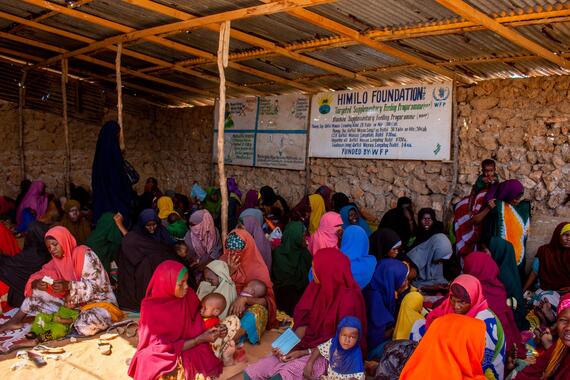
Humanitarian partners carried out an assessment during March, reporting that disease outbreaks are the main cause of medical complications for acute malnutrition in Jowhar. The number of admissions in the Outpatient Therapeutic Programme showed a high level of acute malnutrition.
Abdi Khalif Sabriye, Senior Nutrition Officer for International Medical Corps, explained: “Most of the women you see with their children came from far-away areas in Middle Shabelle Region to Jowhar District. Some others came from Mahaday District, Fidow, Jalalaqsi, Jowhar Town and surrounding villages.”
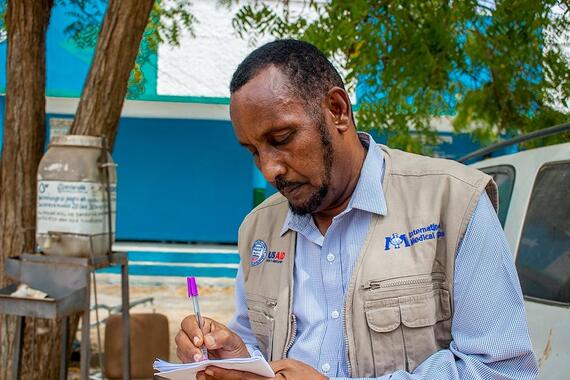
People need and deserve urgent support
Abdirahman Ali Abdirahman, the Medical Director at Jowhar Regional Hospital, said: “We used to have funding for the hospital, but the agency funding us no longer has money. They stopped. This is taking a toll on the hospital. We need support for the hospital, for the children and patients.”
Jowhar District has an estimated population of 450,000. Humanitarian partners reported there were approximately 76,000 IDPs in Jowhar as of October 2022, noting that the number of IDPs continues to increase due to ongoing conflict, drought-induced displacement and water shortages in areas along the Shabelle River. However, the response capacity remains low, mainly due to a lack of funding.
Partners reported: “The situation is urgent, and action is needed immediately to prevent further suffering.” Their report also states: “The people of Jowhar deserve access to basic health care and nutrition services, and the international community needs to step up and provide the necessary support.”
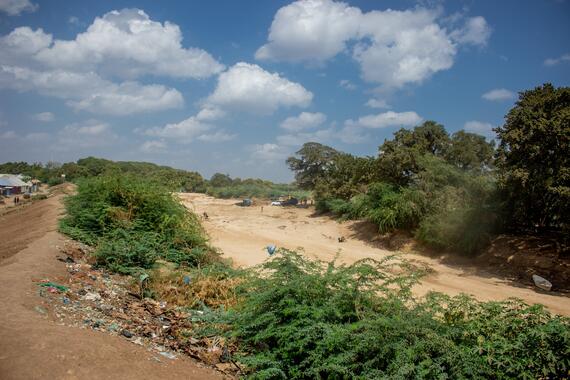
Somalia needs rain and funding
Across Somalia, critical levels of acute malnutrition persist. An estimated 1.8 million children will be acutely malnourished in 2023, including 477,700 children who are likely to be severely malnourished. Between April and June, about 6.5 million people are expected to face Crisis or worse levels of malnutrition. If humanitarian assistance is not sustained, and if the 2023 April to June rains underperform, there is a severe risk of famine.
To meet increased needs, the 2023 Humanitarian Response Plan for Somalia seeks more than US$2.6 billion to assist 7.6 million of the 8.25 million people in need. So far, only 15 per cent has been received. Contributions are urgently required to plug critical gaps, including in core life-saving sectors such as food and health.
Text and images: Adedeji Ademigbuji; Edited by Erich Opolot
